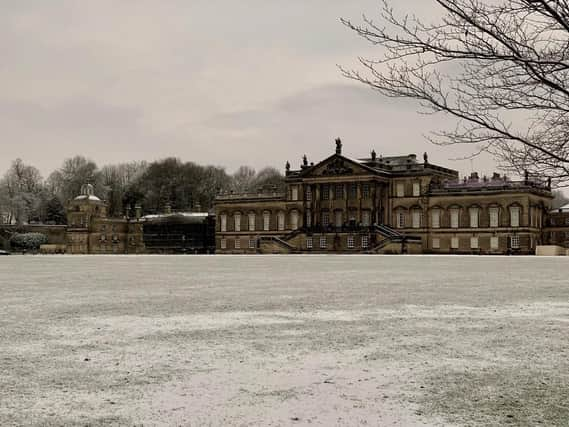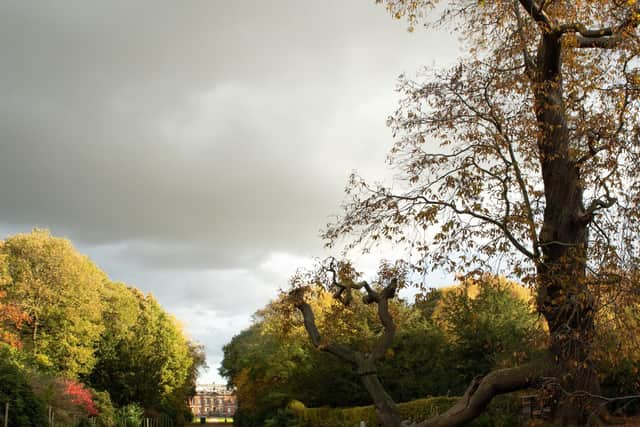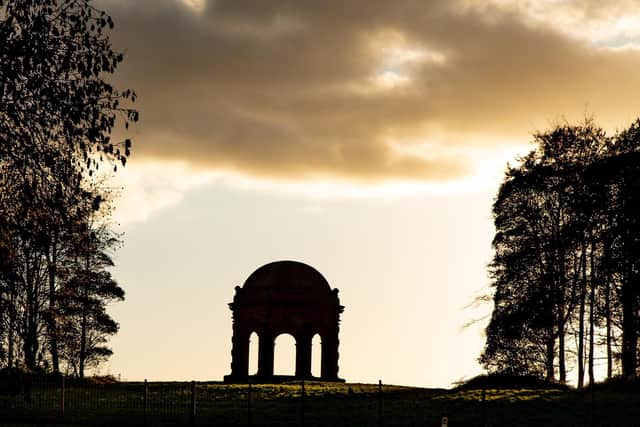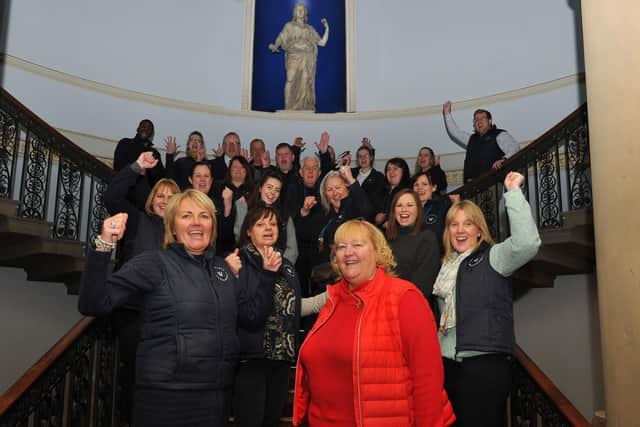How 2020 proved to be a year of silver linings for Wentworth Woodhouse


Having only gradually opened to the public in stages since the Wentworth Woodhouse Preservation Trust bought the Grade I-listed house near Rotherham in 2017, it appeared that lockdown could not have come at a worse time.
Vital restoration work on the roof was still ongoing and the enforced closure threatened to stall the Trust's momentum and derail their efforts to raise awareness of the 'people's palace'.
Advertisement
Hide AdAdvertisement
Hide AdTours, a cafe, events and a gift shop were beginning to bring in income as different parts of the house and grounds were tentatively revealed to visitors and major plans were afoot to eventually make the entire mansion accessible once structural issues had been addressed.


So the 52 staff feared the worse when the doors to the ancestral seat of the Earls Fitzwilliam closed in March.
Yet 2020 has ended up being a year of silver linings at Wentworth. The pandemic has brought unprecedented levels of government generosity, and the Trust has benefitted from heritage funding grants that have accelerated much-needed conservation work they initially feared they may not be able to complete.
Forced to think creatively to maximise limited oppotunities to generate revenue as restrictions continued, the gardens were unveiled and opened to vistiors earlier than planned, and have become a cornerstone of Wentworth's offer this year, as the house itself has still mainly been shuttered.
Advertisement
Hide AdAdvertisement
Hide AdAt the end of the year, the Trust's finances are looking healthy and they are even recruiting new staff. Construction work that had been suspended has now finished.


Pragmatic chief executive Sarah McLeod acknowledges that Wentworth has faced worse challenges in its 250-year history - crippling death duties, personal tragedies, open cast mining on the front lawn - and survived.
A new Covid-proof business model has been created for 2021, and the future remains bright, despite the Trust admitting that the events of 2020 have set their plans back a year.
“Initially, like everyone, we were shocked and imagined the worst. But actually, we were able to find silver linings during the months that followed,” said Ms McLeod.
Advertisement
Hide AdAdvertisement
Hide Ad“Everyone rushed to help - from volunteers deciding to create a stream of morale-boosting videos about life at the house to the funders who acted swiftly to support the devastated heritage sector.”


The swift arrival of £240,000 from an emergency pot, granted by the National Lottery Heritage Fund, gave the Trust three months of vital breathing space. It kept the wolf from the door, paying their running costs from April to June.
“Our finance manager Penny Ramsden and I paid the bills, took stock and re-thought the business plan to find a way forward.”
Roof restoration contractors Woodhead Group were also finding solutions; they managed to establish safe methods of working and in May roofers and stonemasons were back at the house.
Advertisement
Hide AdAdvertisement
Hide AdHaving no daily operational duties to carry out meant there was time to apply for more grants and work out new directions.
A core team was brought back from furlough and a digital audit of the site was carried out, utilising some of the £240,000 grant. The team swiftly realised a Covid-safe means of generating income was literally sitting on the doorstep. The 55 acres of gardens laid out by Humphrey Repton were to become the house's salvation.
By summer, the woodland copses, wildflower meadows and rambling lawns had been thrown open to paying visitors for the first time.
The mansion has been open for just a few weeks over the summer holidays, but the gardens have been open for much of the year and will continue to open every weekend.
Advertisement
Hide AdAdvertisement
Hide Ad“The gardens brought income, gave people a beautiful, relaxing place to exercise and unwind and kept their connection to us - it was really important not to lose the support we had worked so hard to build,” explained Ms McLeod.
Developing the gardens was already a vision for the future, but the lockdowns forced those plans to the fore. A Culture Recovery Fund grant via the National Lottery Heritage Fund made it possible.
The grant awarded £468,282 to help the house survive in the run-up to winter and paid for a food trailer, a mobile classroom and two shepherd’s huts, which are on order and will be in operation next year.
The grant also covered wages and meant the team could move swiftly to act on long-held digital plans which have now become more pertinent.
Advertisement
Hide AdAdvertisement
Hide AdAn online fundraising shop was launched and a mobile film studio equipment was purchased. A volunteer video production team is now in training. Informative films about life behind the scenes will eventually be shown on TV screens in the mansion’s cafe and reception and on Wentworth’s own Youtube channel, which will launch later in 2021.
A digital character experience called Wentworth Reimagined has been subsidised by a £40,000 grant from the Arts Fund charity.
And a £331,200 grant from Historic England's Heritage Stimulus Fund allowed a new temporary heating system to be installed and work on a ground-source heat pump to begin.
These works include urgent repairs to underground drainage, a new water mains connection and the removal of asbestos from the mansion’s cellar.
Advertisement
Hide AdAdvertisement
Hide AdIn November, a further £720,000 was awarded by from the Heritage Stimulus Fund and set aside to restart heritage construction and maintenance projects hit by the pandemic and save jobs in the sector.
It is paying for further vital roof work at each end of the famed East Front - on the North Pavilion, North and South Quadrants, the Meter House and a further section of the Long Gallery. This will protect rooms below, contribute to the building’s sustainability and support jobs in construction and traditional crafts.
Said Sarah McLeod: “We have fought to bring in these grants and as a result, many positive things have happened here during the pandemic. Our gardens are thriving. The house is now warm for the first time since the heating system broke down in January.
“Asbestos has been removed from the cellars, the roof has been repaired, the East Front is free of scaffold after two years and we have the money to repair other vulnerable areas.
Advertisement
Hide AdAdvertisement
Hide Ad“Our priorities have been trying to keep people safe, boost morale, retain jobs and keep the project moving.
“We are one year behind where we had planned in terms of sustainability. But what is one more year in the life of this house?
“We hope to hit the ground running when we come back next year. Supporters will find an even better Wentworth Woodhouse waiting for them when we can re-open in the spring."
Comment Guidelines
National World encourages reader discussion on our stories. User feedback, insights and back-and-forth exchanges add a rich layer of context to reporting. Please review our Community Guidelines before commenting.